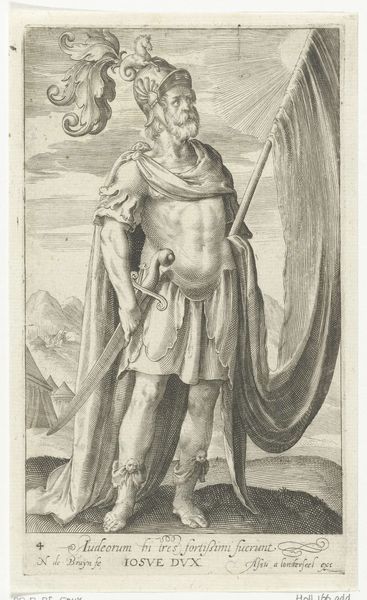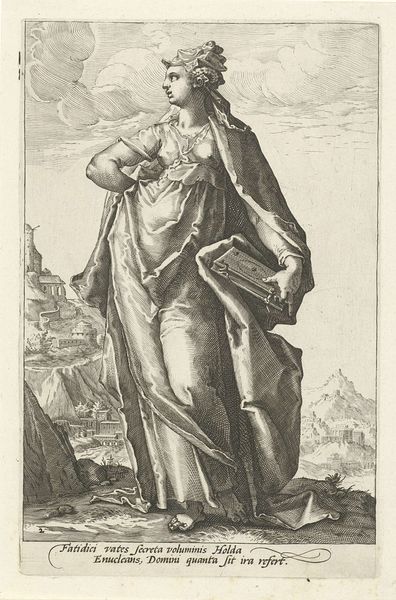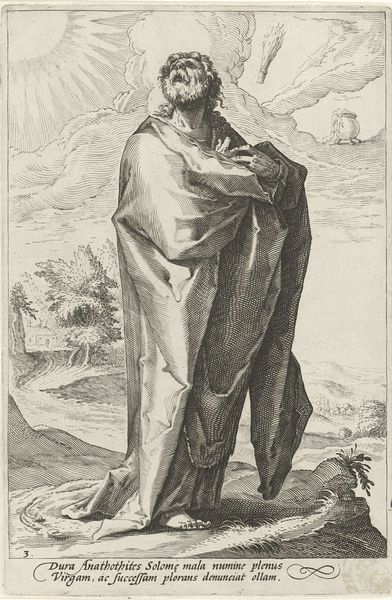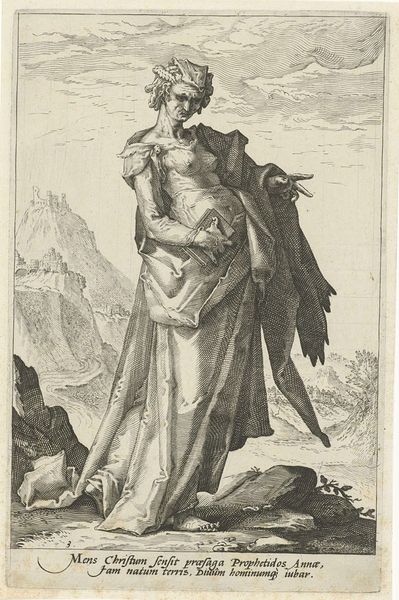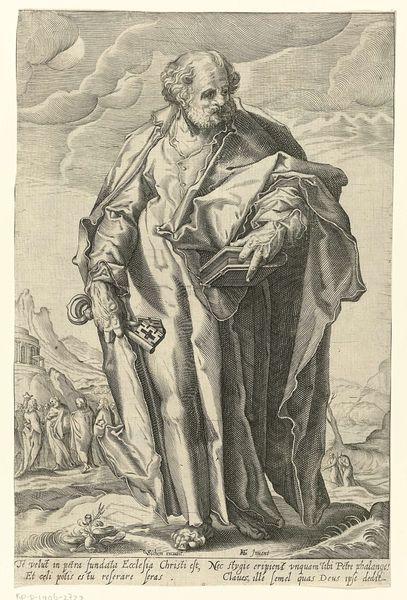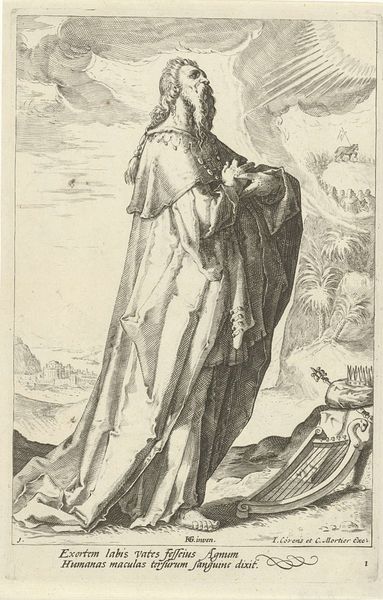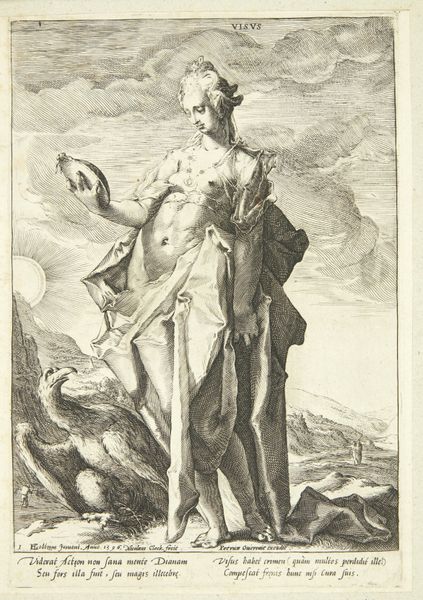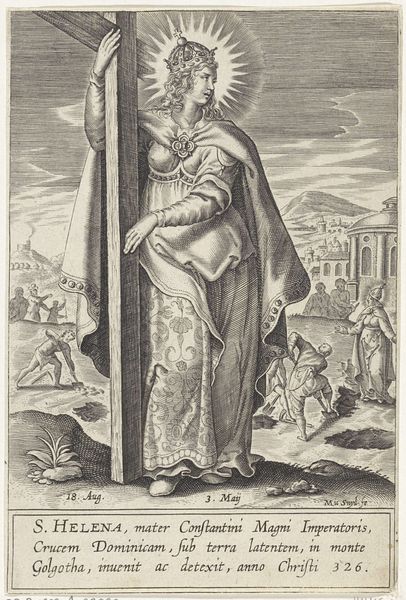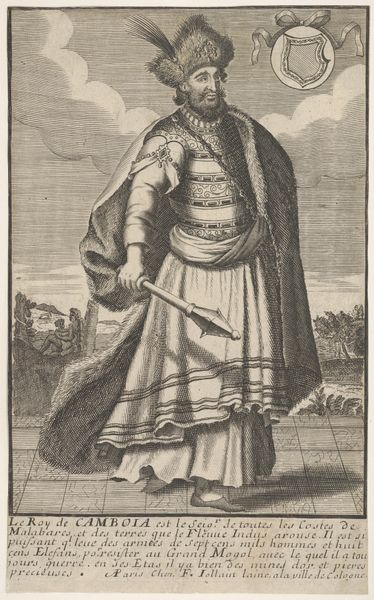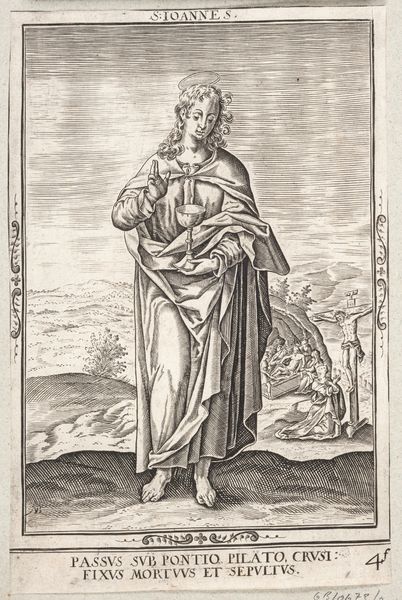
print, engraving
# print
#
landscape
#
figuration
#
history-painting
#
engraving
#
realism
Dimensions: height 250 mm, width 165 mm
Copyright: Rijks Museum: Open Domain
Curator: Welcome. Here at the Rijksmuseum, we're looking at "Jesaja," an engraving by Jacob Matham, created in 1589. Editor: There's a striking somber quality to it, isn’t there? The way the figure dominates the foreground… it feels both powerful and desolate. The prophet has a heavy expression. Curator: Well, engravings like this are interesting because they required specialized tools and skill. Consider the engraver, Matham. How he used different weighted cuts of lines into a metal plate in order to define a face or create a sense of fabric and draping. Editor: And look at the symbolism: the figure of Isaiah, with the Latin inscription hinting at the miracles of Christ and salvation. There's a visual and textual interplay happening. Even his worn garment speaks volumes. Curator: Yes, the cost of materials, the process of etching…prints democratized image production. They put religious figures into the hands of ordinary people and how the availability and affordability changed art making and image ownership. Editor: Absolutely. And within those ordinary homes, this image becomes something more. Isaiah's suffering, emphasized by his tattered state, becomes relatable. He stands as a visual reminder of hardship. Curator: I find myself reflecting on the physical labor involved in printmaking at this time and the cost, especially, as engravings could become works of art in and of themselves but, even more importantly, this availability of art making enabled more people to interact with art and visual culture. Editor: Ultimately, Matham captured an essence of hope, albeit a melancholic one. Even through suffering, a possibility of something greater remains, a very hopeful symbol, maybe? Curator: Very much so. By considering the methods and resources required for its creation, we can reflect upon access to art and imagery production and recognize a very special object. Editor: Examining Matham’s engraving shows that artwork are material things filled with symbolic possibility to inspire ideas.
Comments
No comments
Be the first to comment and join the conversation on the ultimate creative platform.
